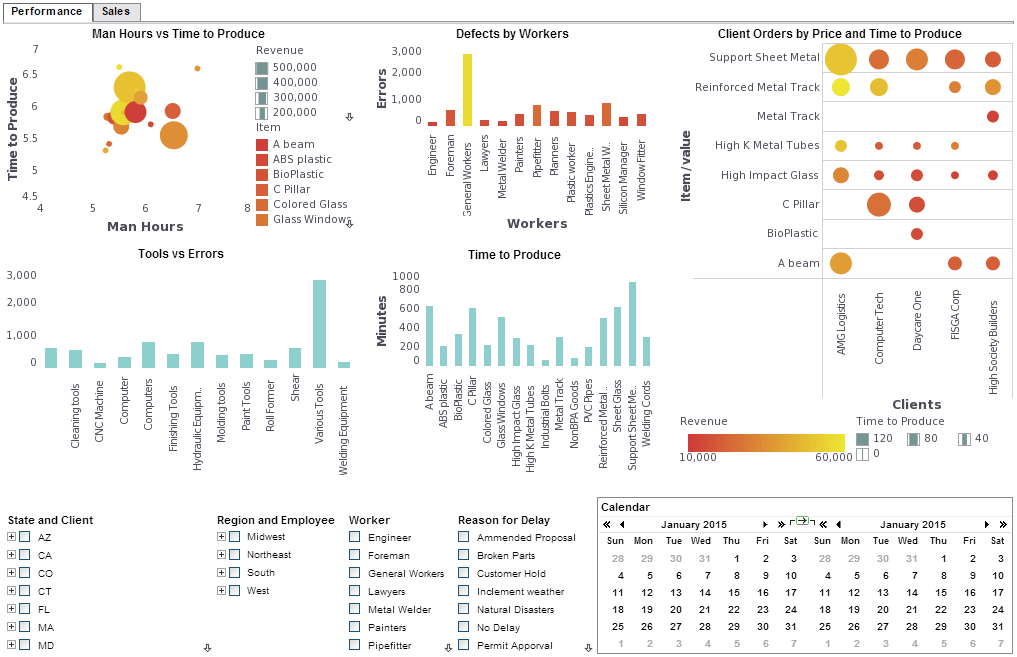Conduct a Performance Analysis Workshop
This is the transcript of an in-person customer seminar hosted by InetSoft on the topic of "How Performance Management Consultants Work." The speaker is Christopher Wren, Principal Consultant at TFI Consulting.
The next step would be then to conduct a performance analysis workshop where you go for the findings, and you reinforce it one more time. The workshop is extremely important. The workshop is attended by all people from the executives down to the staff level.
It is really to allow people to voice their concerns, to voice their areas where they feel they are really strong. It is a means of communication. It's a means of setting the stage in case changes come out of it.
There is also a step where you can, of course, score the company. Obviously you have to score, and then there is always a question of comparing them to others. And then the next step is implementation planning.
That includes change management plans and implementation plans and communication plans, and then to go forward, prioritize the issues and get a commitment. Take the first highest priority issue, and work on it.
So what do some of these things look like in detail? We will talk about that. The other things that we have to address when we are in an organization, they overlay like clouds.
| #1 Ranking: Read how InetSoft was rated #1 for user adoption in G2's user survey-based index | Read More |
Management Organizational Culture
There are those things that are somewhat intangible. There are skills and knowledge within the organization that you have to look at. There is the management organizational culture and then last not least there are technologies, the software.
I have worked with many organizations that have spent hundreds of million of dollars putting work management system and enterprise resource management systems in place, only to find out that the tool itself doesn’t solve the problem. The tool will automate the problem. It will create problems much faster at a much faster rate, but it will not solve a problem.
Only a diligent analysis of the root cause of the processes, a review of the processes, a review of the procedures and the policies as well as the skills and knowledge and the management work culture will really tell you what should we be doing. And then once you have identified, prototyped, implemented and tested and tried the changes that you put in place, then it is time to go out there and look for a tool that can automate what you have now identified as the best process.
So when we put all of this together, we put it into a high level checklist. We call it the excellence matrix because that way we could trademark it, right, that’s all the reason for it. It's a checklist. What does it do? Well it addresses the categories of the processes that you have got to look at in an organization.
Here are all the management and business culture, work culture type issues. Here are the skills and knowledge type things, and then here are the technologies. Underneath that, the next level down, we have got our processes up here which is engineering, design, construction, maybe asset management, maybe strategic and business planning, those type of things.
They are all listed down here. Here you have qualifications and so on. And then the next level down is the sub-processes and under engineering, design, construction, you might have project management, construction management, engineering design processes and things like that.
 |
View a 2-minute demonstration of InetSoft's easy, agile, and robust BI software. |
Where Are the Gaps and Challenges
And then underneath each of these, we have what we refer to as the attributes, where over the years we were smart enough when we worked with companies that did really well in just one of these little areas, we wrote down why they were doing really well.
And we use those attributes to really analyze these organizations and to identify where they have some gaps and some challenges. And here is what that may look like at the element level. So here you have your processes, you have got your management work culture things. You can plot it, and this is chart is a very simple tool. And then of course everyone is always interested, are we in the first quartile, or in the third quartile, all that type of stuff.
This is more for the technical people within the organization. Ultimately, it doesn’t matter what quartile you are in, either. There is a need to address this, or there is not, who cares what other companies do, okay. But it is valuable to identify some industry-wide challenges too.
I work a lot in the power industry, these electric utilities, and quite frankly, the average age there is 48 years now in the workforce. For 20 years, they have cut the fat out, and they have let people go, and they have really slimmed down, and now they are at a point where they have to start construction again because otherwise the lights go out, and guess what, nobody is there. Nobody is home.
And those people that have executed very well over the last 20 years because they had a high level of experience, well they are about to retire, and nobody has bothered to write any of that down. So that’s an industry-wide problem. So we can identify those things. We can also look at organizational disconnects.
| Previous: Sound Strategy Leads to High Performance |


